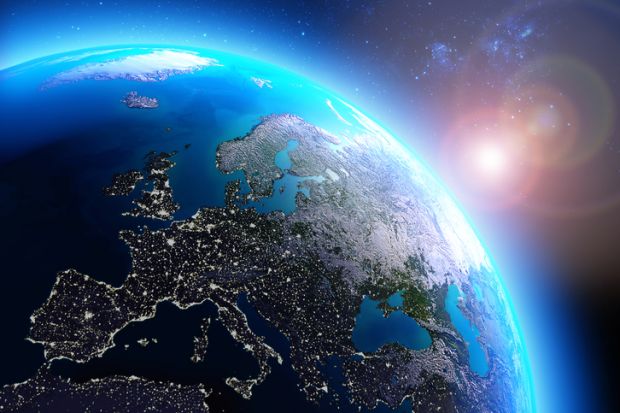A university has set up a new centre designed to bring geography into closer dialogue with creative practitioners and the humanities.
Harriet Hawkins, reader in social and cultural geography at Royal Holloway, University of London, said the past few years had witnessed what she described as “a spatial turn in the humanities”, which can be seen in an increasing focus on questions of borders and displacement, the use of the term “Anthropocene” to describe the current geological era and even the development of site-specific performance art.
This has also led to increasing use of the term “geohumanities” and the American Association of Geographers’ launch of the journal GeoHumanities: Space, Place, and the Humanities, where she serves as associate editor.
“It therefore felt like a good moment”, Dr Hawkins said, for Royal Holloway – which “pioneered a master’s in cultural geography 20 years ago this year under Professor Denis Cosgrove” – to establish its Centre for the GeoHumanities to offer “a geographical twist on the work of institutions such as the Centre for Research in the Arts, Social Sciences and Humanities and Oxford Research Centre in the Humanities”.
The new centre brings together 72 scholars working across geography, the arts and humanities, as well as the cultural and heritage sectors, who are engaged in academic and artistic projects organised under the themes of the environmental, creative, spatial, digital and public geohumanities. Topics they hope to address include “global environmental futures” as well as “climate change, migration and social justice”.
Shortly due to appoint its first lecturer in geohumanities, the centre was formally launched this week at an event at the Royal Geographical Society, at which Jerry Brotton, professor of Renaissance studies at Queen Mary University of London, gave the inaugural Denis Cosgrove Lecture.
Describing himself as “someone who was trained and works within the discipline of English but regards geography as central to everything I research”, Professor Brotton returned to the themes of his recent book This Orient Isle: Elizabethan England and the Islamic World.
This work was intended partly as a “corrective” to “the usual celebrations of Elizabethan England as a parochial, insular ‘sceptred isle’”, which he had rightly predicted “would be trotted out in popular and academic celebrations” of the 400th anniversary of Shakespeare’s death.
Yet such a stress on “Englishness” glided over the fact that “the trade with Turkey, Morocco and Persia (which continued throughout this period) transformed the domestic economy of Elizabethan England, from what people ate to what they wore, and even what they said”. Words such as “crimson”, “sugar”, “turquoise”, “tulip” and even “zero” all entered the language, “primarily thanks to the effects of Anglo-Islamic trade”.
Such questions of “nationalism, cross-cultural exchange and faith”, concluded Professor Brotton, were among those that “any understanding of the geohumanities has to face”.
Register to continue
Why register?
- Registration is free and only takes a moment
- Once registered, you can read 3 articles a month
- Sign up for our newsletter
Subscribe
Or subscribe for unlimited access to:
- Unlimited access to news, views, insights & reviews
- Digital editions
- Digital access to THE’s university and college rankings analysis
Already registered or a current subscriber? Login




